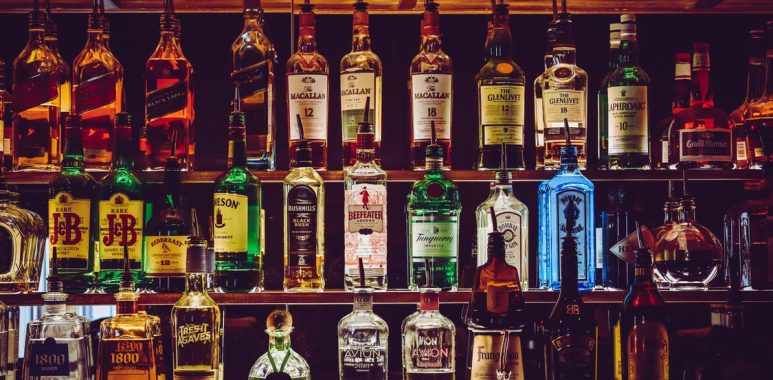
What Could Explain the Drastic Rise in Older Adults’ Alcohol Consumption?
We are seeing a rise in alcohol consumption among older adults in the US. With an aging population and the prediction that older adults will outnumber younger adults by 2034, this is potentially a worrying fact. Alcohol consumption can have additional risks for people who are older and therefore this could lead to more health complications and a greater strain on society.
Given that this increase has mainly been over the last couple of years, getting treatment might be easier than for those who have a longstanding addiction. People who are drinking more but are not addicted may be able to stop before they develop a dependency. For those who have developed a use disorder, it can be caught early on when alcohol treatment and recovery is more likely to be successful.
Table of Contents
Effects of Excessive Alcohol Consumption
Excessive alcohol consumption can lead to both physical and mental health problems including heart and liver diseases, increased risk of cancer and stroke, accidents, memory issues, and mood disorders. For people who are older, there are additional risks. Older people metabolize alcohol slower which increases their sensitivity to the drink. A small amount of alcohol might affect an older adult intensely. Older people also have less lean body mass on average which means there is less muscle to absorb the alcohol so the effects set in quicker. Old people are more susceptible to falls and greater injury from falls. Being more sensitive to alcohol can be dangerous as there is increased risk of falls, bone fractures, and other unintentional injuries.
Many older adults take multiple prescription medications and have underlying health problems. This can be dangerous when mixed with alcohol. Medicines which interact dangerously with alcohol include aspirin, acetaminophen, cold and allergy medicine, cough syrup, sleeping pills, pain medication, and anxiety and depression medicine. Health problems which alcohol makes worse include diabetes, high blood pressure, congestive heart failure, liver problems, osteoporosis, memory problems, and mood disorders.
How COVID-19 Has Affected Alcohol Consumption in Older Adults
The week after stay-at-home orders began, the national sale in alcohol increased by 54%compared to the same week the previous year. Increased consumption of alcohol is a common way of dealing with stress, and the pandemic has put stress on many people. While the biggest increase in alcohol consumption since the pandemic is in people aged eighteen to thirty-nine, people over forty are more likely to experience an increase in alcohol consumption in conjunction with mental health issues.
Research conducted with people aged fifty-five or older reported an increase in alcohol consumption compared to their pre-COVID-19 drinking habits. The study also asked questions to identify whether people were experiencing symptoms of anxiety, depression, or loneliness and found that those who were had a greater chance of increased alcohol consumption. A poll showed that while only fourteen percent of people aged fifty to eighty said that they drank more in the first ten months of the pandemic compared to before, this percentage was higher in people who said they drink as part of their routine, to boost their mood or relax, or to cope with boredom, stress, or pain. Additionally, twenty-three percent of them reported routinely drinking more than three drinks in one sitting and ten percent reported taking drugs while drinking including marijuana and prescription medications.
The Disproportionate Effects of COVID-19 on Women Compared to Men
While men have also been affected by the pandemic, the effects on women have been more extreme and this has affected the drinking habits of women. There has been a general trend in women drinking more over the past couple of decades; however, this has increased more during the pandemic. Women increased their heavy drinking days by forty-one percent compared to before the pandemic.
Women have twice the risk for depression and anxiety as men. The pandemic caused an increase in mental health issues. There are reports that there were more additional pandemic-related changes in women compared to men including productivity, mood, sleep, and health-related worries. Since we spoke about how there is a link between these illnesses and increased alcohol consumption among older adults, it may be that older women are at a greater risk of increased alcohol consumption compared to older men as they are more likely to experience these illnesses because of the pandemic.
Another reason that women have started drinking more during the pandemic is that they are more likely to be the ones who do household tasks, caregiving, and child-rearing. During the pandemic, there was a decrease in childcare support due to the stay-at-home order as well as the additional burden of remote schooling. While the additional burden of childcare is unlikely to affect women over sixty, they are still more likely to do household tasks and women in their forties and early fifties are likely to still have children in school.
In addition, there have been decreased escape options for women living with an abusive partner during the pandemic. Before the pandemic, women or their partners were more likely to work away from home during the day. With stay-at-home orders, there was an increase in domestic violence as these women were spending more time with their abusive partner. The stress caused by this could be a factor in increased alcohol consumption.
Women metabolize alcohol differently than men and are more susceptible to negative physical consequences such as cognitive impairment, heart disease, and liver disease. It is therefore worrying that older women are particularly at risk of drinking more as they have the risks associated with their gender as well as their age.
Final Word
While there has been an increase in alcohol consumption among older adults for the last two decades, this has increased further since the start of the pandemic. As things go back to normal, we have more older adults who are in the habit of drinking more heavily and having developed alcohol use disorders. It is important that we protect our older population, giving them support through community, mental health services, and support with their alcohol consumption.
